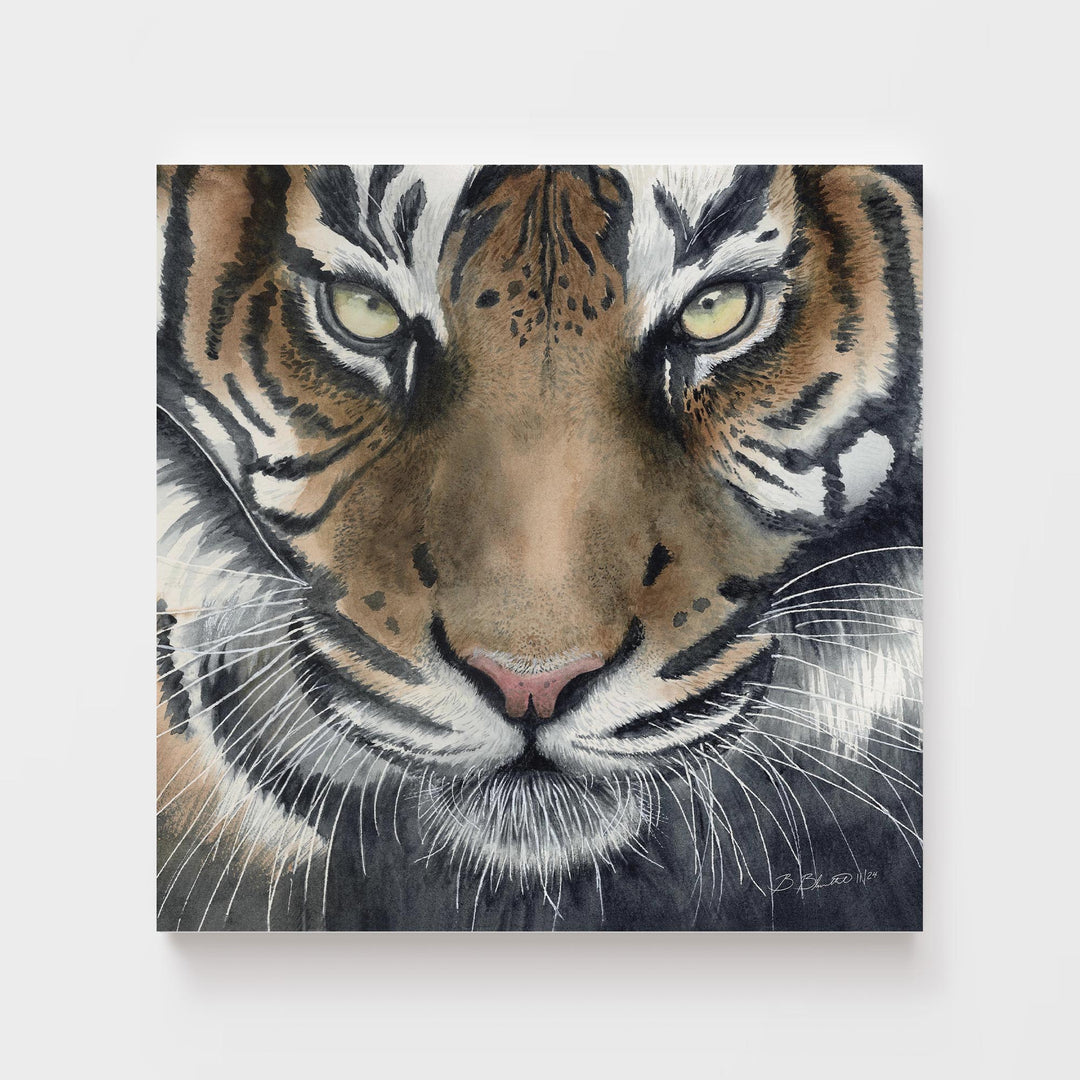"Watchful Guardian" is a piece of artwork that captures the essence of one of nature's most misunderstood creatures: the wolf. As part of the "Windows" Collection, the Wolf's piercing eyes seem to peer into the viewer's soul, highlighting the wolf's role as a protector and symbolizing guardianship within the animal kingdom.
This watercolor was inspired by my love of wolves. Growing up with a Siberian Husky, I developed a deep affection for wolves at an early age. His calm spirit and loyalty —perhaps with a hint of wolf DNA—instilled in me a profound appreciation for these majestic animals. This personal connection drives my passion to share the truth about wolves, who are often villainized and misrepresented as fierce predators.
In reality, wolves embody profound qualities such as loyalty, strong family bonds, and playful behavior. They nurture their young with love and care, creating tight-knit packs that symbolize unity and cooperation. "Watchful Guardian" invites viewers to look beyond the stereotype and see the wolf for what it truly is—a symbol of kinship and resilience.
Set against a dramatic black background, the intensity of the wolf's watchful gaze draws the viewer in, encouraging a deeper understanding of this magnificent animal. This Wolf painting not only celebrates the beauty and mystery of the wolf but also serves as a poignant reminder of the need for empathy towards all living beings.
Wolf Conservation Notes: Wolf conservation is critical for maintaining the balance of ecosystems and preserving biodiversity. As apex predators, wolves play an essential role in regulating prey populations, which in turn supports healthy vegetation and a diverse array of wildlife. Their presence helps to stabilize ecosystems, preventing overgrazing and fostering a thriving environment for other species.
Despite their importance, wolves face significant threats due to habitat loss, hunting, and misconceptions about their behavior. Conservation efforts are vital for the survival of wolf populations and the health of the ecosystems they inhabit. Numerous organizations such as, Defenders of Wildlife, Center for Biological Diversity and the International Wolf Center, work tirelessly to protect wolves and their habitats.
Effective conservation strategies implemented by these organizations include habitat restoration, the establishment of wildlife corridors, and community engagement programs that highlight the benefits of thriving wolf populations.
By supporting these conservation initiatives, we can ensure that wolves continue to roam the wild as an essential part of our natural world.
Reference Photo by Emmanuel Keller.





























